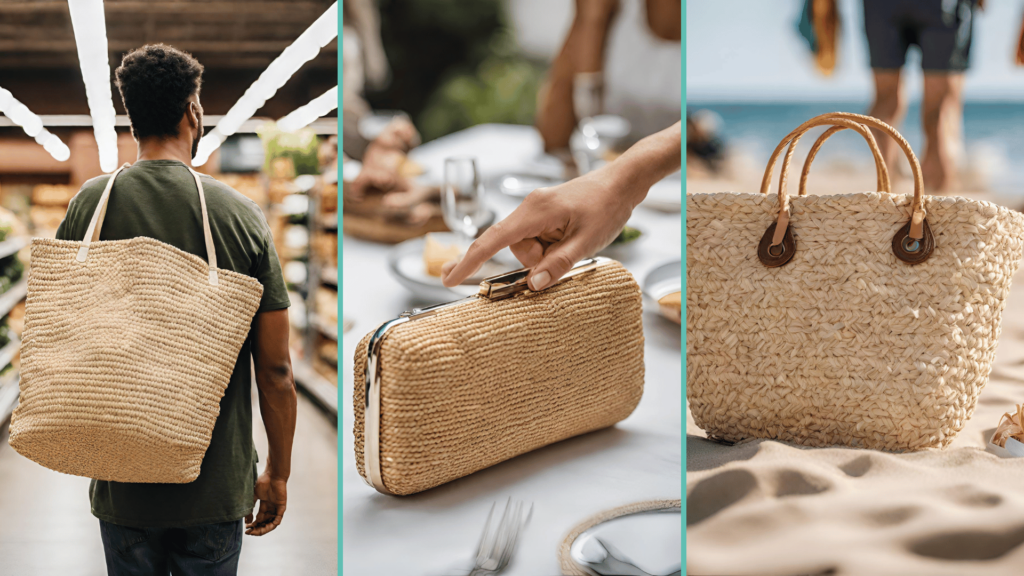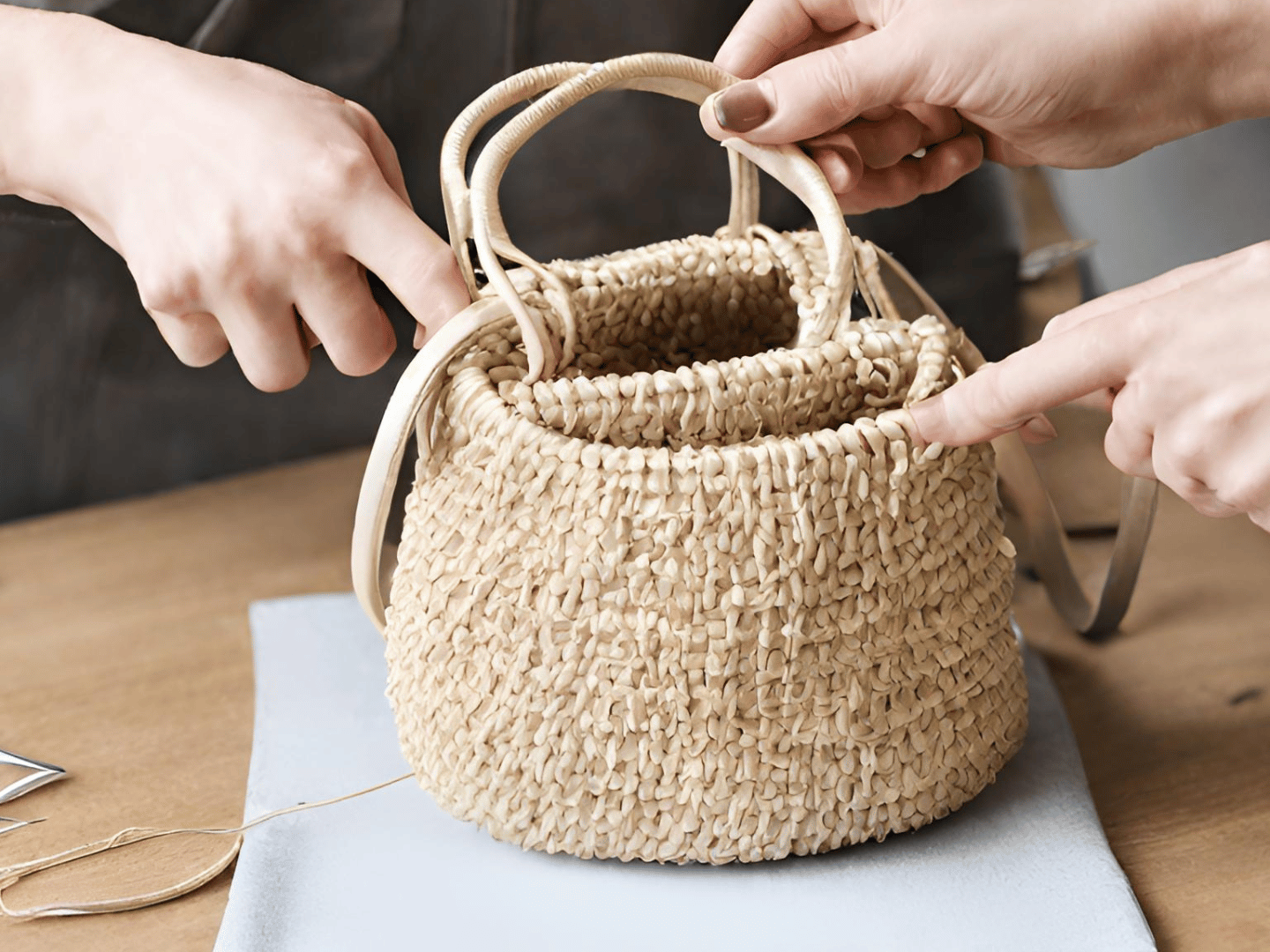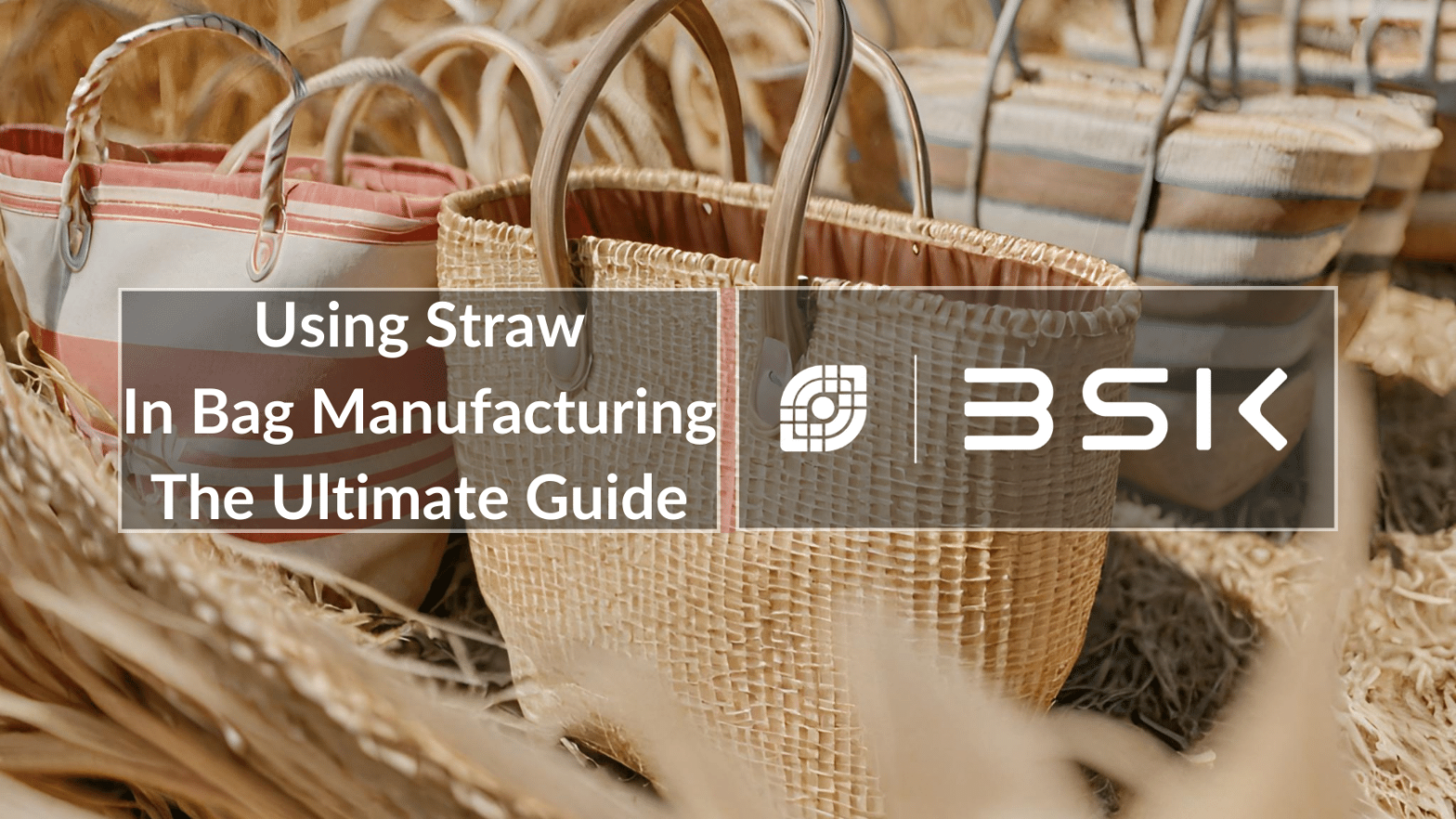It’s important to choose the right material for bags, whether in development or production, from the fashion sense to the practicability. Everyone, from the designer and manufacturer to the final customer, wants something that is not just quality but durable and would suit them and their look. So when choosing the bag itself, material is a big factor. Whether it is practical for work, traveling, or going to the beach. You want to ensure it’s the right fit for you. But nowadays, more than the look and feel are needed, with sustainability at the forefront of the customers choice, the materials being used are also a factor. Straw is another material that is used more than before. This article will guide the reader into using straw material in bag manufacturing.

What Is Straw?
For centuries, people have used straw as a versatile material for various purposes, such as stuffing beds and buildings and providing nutrition to farm animals. As it is a by-product of the food industry, it is abundant and sustainable. In addition to its traditional uses, straw has become a popular choice for manufacturing bags due to its durability. This eco-friendly material is known for its strength and has found a prominent place in creating a variety of bags, ranging from tote bags for grocery shopping to beach bags for beach-goers.
The Advantages of Using Straw Material in Bag Manufacturing
- Don’t forget that using a straw bag instead of a harmful plastic bag is a great way to protect the environment. It’s made of natural materials and is a sustainable alternative for carrying your belongings.
- Straw bags are durable and can last for years with proper maintenance. They have a unique texture and pattern and are lightweight, making them easy to carry.
- Straw bags are popular for their natural appearance and durability. Beach bags, tote bags, and clutches are popular straw bag types.
Certain types of bags suit straw material due to their specific features. Beach bags made from straw material are very popular because of their earthy features and ability to withstand sand and water. Tote bags are also popular due to their capacity to hold many items. Considering this, high-end fashion brands such as Chanel and Dolce & Gabbana have started using straw material in their bags, giving them a unique aesthetic look.
Limitations of Using Straw in Bag Manufacturing
- First, it may only be suitable for some bags and occasions. For example, it may not be the best choice for waterproof or weather-resistant bags.
- If you expose straw bags to moisture or handle them roughly, they are more likely to wear and tear over time. This would mean taking some maintenance measures that may be time-consuming (but worth it) but that the buyer has to consider.
- Straw bags may only be suitable for some occasions and events due to their natural aesthetic and limited functionality.

Straw Production & Manufacturing Considerations
Different types of straws can be used to create bags, but the Raffia straw is the most popular for beach bags. This specific type of straw comes from the Raffia palm tree leaves, mostly found in Madagascar. The leaves are stripped and then dried in the sun with minimal use of machinery. On the other hand, straws grown from plant stalks are usually harvested using heavy machinery. Making straw bags requires weaving the straw into a pattern and sewing it with expertise. Special equipment is not necessary, but one must possess skills for processing and assembly. Crafting with straw demands a sharp eye for design, precise cutting abilities, meticulous stitching, and a dedication to finesse.
Straw Sustainability & Environmental Impact
Straw is an environmentally friendly and sustainable material due to its biodegradability, which means it can break down and decompose naturally without causing any harm to the environment. And recyclability so it can be repurposed and reused in various ways, further reducing its impact on the planet. It is also a renewable resource, making it an ideal choice for consumers who care about the environment. The Global Organic Textile Standard (GOTS) is a certification and industry standard associated with straw materials.
Conclusion
Straw material is an excellent choice for bag manufacturing due to its durability, unique texture, and eco-friendliness. Although it has some limitations, straw bags are a popular choice among consumers, particularly those who are environmentally conscious. We encourage readers to consider the suitability of straw material for their bag manufacturing needs.
